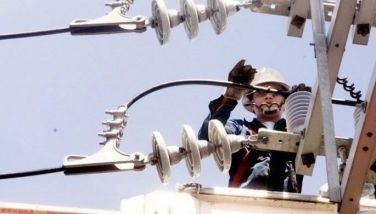Strong peso - good or bad?

Last week, the Philippine Chamber of Commerce (PCCI) urged the government to review the Philippine peso’s steady appreciation. The business group is concerned about the impact of a strengthening peso on small exporters, especially those from the agricultural sector. After closing at 48.58 last Friday, the peso is up 4.1 percent year-to-date, making it one of the strongest currencies in Asia. The strong peso bears careful watching as it can be positive or negative for specific sectors of the economy.
Benefits of a strong peso
Below, we summarize the economic benefits of having a strong currency.
1. Cheaper imports. A stronger peso makes imports less expensive and benefits businesses and manufacturers that import their raw materials.
2. Lower consumer prices. The strong peso has translated to lower consumer prices, thus providing some relief to Filipinos who have lost their jobs or are underemployed as a result of the pandemic.
3. Benign inflation. The appreciation of the peso can temper inflationary pressures emanating from imported goods and international commodity prices.
4. Lower foreign debt servicing. Since foreign debt is denominated in US dollars and other currencies, a stronger peso translates to lower interest and principal payments.
Negative effects of a strong peso
Though currency appreciation has clear benefits, too strong a peso negatively affects key sectors of our economy, as we discuss below.
1. More expensive exports. Priced in our local currency, Philippine exports become more expensive and less competitive as a result of a strong peso.
2. Less competitive BPO. A continued appreciation of the peso may make our Business Process Outsourcing (BPO) sector less competitive against outsourcing powerhouses such as India.
3. Less value for OFW remittances. A strong currency reduces the peso value of cash remittances from Overseas Filipino Workers (OFWs).
4. Curtails development of local industries. Too strong a peso may hamper the development of important local industries such as tourism, manufacturing, and agriculture.
Good housekeeping contributes to currency appreciation
One of the reasons behind the strong peso is the country’s robust fiscal position. This was affirmed by our credit rating from major agencies such as S&P, Moody’s, and Fitch. This was also recognized by the recent upgrade to A by the Japan Credit Rating Agency. The government’s economic managers deserve credit for being proactive and remaining vigilant in managing the country’s finances.
Bangko Sentral ng Pilipinas (BSP) Governor Ben Diokno pointed to the country’s solid fundamentals as the reasons behind the strong peso. He cited benign inflation, a strong banking system, a prudent fiscal position, and sufficient levels of GIR as positives for our economy. The central bank governor, likewise, explained that our country exhibits favorable debt management and international reserve metrics compared to our peers, and this is being manifested in the movement of the peso.
Furthermore, Finance Secretary Sonny Dominguez noted that the appreciation of the peso was caused by a high currency reserve position and mild inflation. Gross international reserves (GIR) rose to an all-time high of $98.6 billion as of end-July. According to Secretary Dominguez, this is equivalent to 8.9 months’ worth of imports, 7.5x the country’s short-term external debt based on original maturity, and 4.9x the short-term external debt based on residual maturity. In fact, our country’s GIR currently exceeds total foreign debt stock. On top of this, inflation for the month of August was lower than expected at 2.4 percent, thus highlighting the country’s benign inflation environment.
Broad-based US dollar weakness drives peso higher
Aside from the country’s sound fundamentals, a major reason behind the strength of the Philippine peso is the weakness of the US dollar. The US dollar index (DXY) has fallen 3.7 percent year-to-date. In a previous article, we enumerated the reasons behind the broad-based weakness of the US dollar (see The end of the strong US dollar?, June 8). US dollar weakness can also be seen in the 5.5 percent year-to-date appreciation of the euro. In fact, the euro has appreciated more than the peso in recent months. As seen in the chart below, the EUR/PHP rate has broken out of a 2 ½-year downward channel back in July. The recent breakout is now consolidating, preparing to resume the uptrend if 58.40 is broken.
Price chart of EUR/PHP Market to determine direction of peso
A strong peso can be harmful or beneficial to various sectors of the economy. We believe that the BSP has actually been buying US dollars to smoothen the appreciation of the peso. If not for the central bank’s buying, the peso would probably be stronger. Going forward, a combination of domestic and global factors will remain as the primary drivers of the Philippine peso. Ultimately, the movement of the peso will be determined by market forces.
Philequity Management is the fund manager of the leading mutual funds in the Philippines. Visit www.philequity.net to learn more about Philequity’s managed funds or to view previous articles. For inquiries or to send feedback, please call (02) 8250-8700 or email [email protected].
- Latest
- Trending































